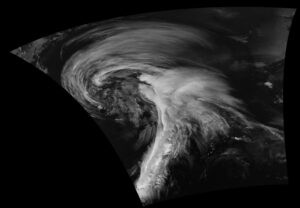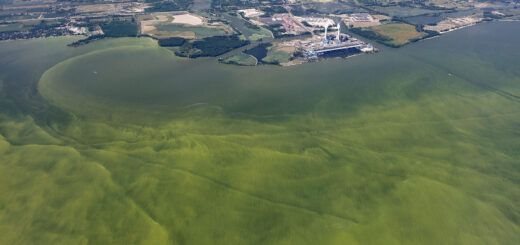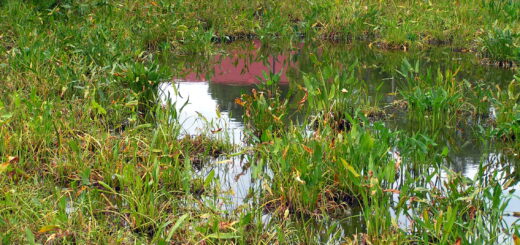Research Brief: Extratropical Cyclone Trends in the Great Lakes Region
1Cyclone dynamics in the Great Lakes region have gradually shifted over the years, impacting communities surrounding the lakes and influencing climate changes. The Laurentian Great Lakes are specifically impacted due to being located at the intersection of multiple extratropical cyclone (ETC) tracks.
A 2023 research letter published by the Geophysical Research Letters examined historical cyclone characteristics between 1959 and 2021 to identify trends in ETCs. The ultimate goal of the study was to understand how ETCs are changing within a warming climate.
Methods
The cyclone data was isolated to only the Great Lakes region over a period of 60 years over the cold season (October through March is one year), and the year’s data is averaged. A Lagrangian analysis was conducted on individual ETCs that pass through the region and identify how air masses in the cyclones have changed in recent decasdes.1
866 cyclones were identified in the study window and were categorized as either large long-track cyclones or smaller short-track cyclones. The median cyclone track (2,000 km) was used to differentiate between long and short-track cyclones. Separating the two types allows for a greater understanding of whether long-lived storms are more influenced by the warming climate or if all ETC were impacted the same.

A strong late-winter cyclone brought significant snows and blizzard conditions to the upper Great Lakes/northern Plains on 21 February 2014. In the warm sector of the storm, there were numerous reports of tornadoes, large hail, and damaging winds in the eastern US. Suomi NPP viewed the storm multiple times, including just before 1800 UTC on 21 February. (Credit: NASA / Goddard / UWM / SSEC / CIMSS / Suomi NPP via Flickr CC BY 2.0)
Results
The historical analysis revealed that “airmasses within the cyclones have increased in moisture and warmed up faster than the overall climate.”1 In addition to the changes in climate characteristics associated with the cyclones, ETC tracks were shown to shift upward over time.
The change in trends implies that the frequency of warm temperatures and heavy rainfall in the winter is increasing in the lower portion of the region. Though short-track cyclones are not always included in ETC studies, they were included in this case as even smaller ETCs have an impact on the Great Lakes region.
With over 30 million people relying on its drinking water and generating $17.8 billion GDP in 2020, identifying any possible influences on the region is essential. Ultimately, understanding ETC trends in the Great Lakes can support management and infrastructure changes as the region endures these storms.
Source
- Hutson, A., Fujisaki-Manome, A., & Glassman, R. (2024). Historical trends in cold-season mid-Latitude cyclones in the Great Lakes Region. Geophysical Research Letters, 51, e2024GL109890. https://doi.org/10.1029/2024GL109890














[…] Hutson, A., Fujisaki-Manome, A., & Glassman, R. (2024). Historical trends in cold mid-latitude cyclones in the Great Lakes region. Geophysical Research Letters, 51, e2024GL109890. https://doi.org/10.1029/2024GL109890 Source link […]